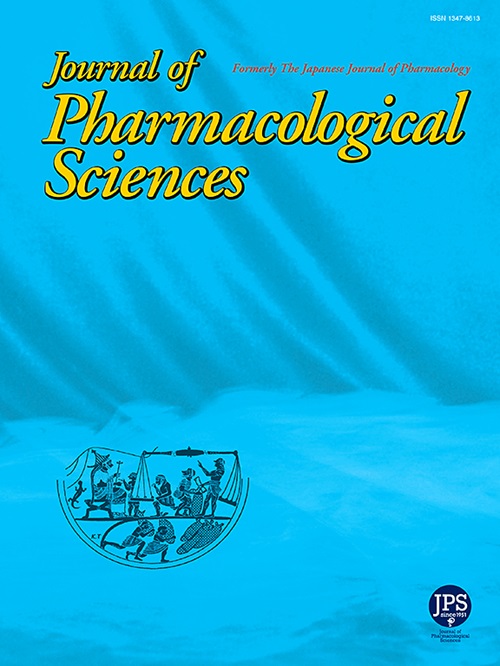Involvement of N-methyl-D-aspartate receptor GluN2C/GluN2D subunits in social behavior impairments in mice exposed to social defeat stress as juveniles
IF 2.9
3区 医学
Q2 PHARMACOLOGY & PHARMACY
引用次数: 0
Abstract
Glutamatergic system dysfunction is associated with the pathophysiology of stress-related psychiatric disorders. However, the role of N-methyl-D-aspartate (NMDA) receptor GluN2C and GluN2D subunits in the pathophysiology of adverse juvenile experiences remain unclear. This study aimed to investigate the involvement of GluN2C and GluN2D subunits in social behavior impairments in mice exposed to social defeat stress as juveniles. Acute administration of PPDA, a GluN2C/GluN2D antagonist, and ketamine, a non-competitive NMDA receptor antagonist, attenuated social behavior impairments in stressed mice. This attenuating effect of ketamine was partially inhibited by the administration of CIQ, a GluN2C/GluN2D-containing NMDA potentiator. The prefrontal cortex of stressed mice exhibited significantly elevated levels of GluN2C and GluN2D proteins compared to control mice. These findings suggest that activation of GluN2C- and/or GluN2D-containing NMDA receptors contributes to the development of social behavioral impairments induced by juvenile social defeat stress. Moreover, these subunits may play a role in the therapeutic effects of ketamine. Targeting GluN2C/GluN2D subunits of NMDA receptors may be novel therapeutic strategies for stress-related psychiatric disorders in adolescents with adverse juvenile experiences.
n -甲基- d -天冬氨酸受体GluN2C/GluN2D亚基参与幼年期暴露于社会失败应激的小鼠的社会行为障碍
谷氨酸系统功能障碍与应激相关精神疾病的病理生理有关。然而,n -甲基- d -天冬氨酸(NMDA)受体GluN2C和GluN2D亚基在青少年不良经历的病理生理中的作用尚不清楚。本研究旨在探讨GluN2C和GluN2D亚基在幼年期暴露于社交失败压力的小鼠社交行为障碍中的作用。急性给药PPDA (GluN2C/GluN2D拮抗剂)和氯胺酮(非竞争性NMDA受体拮抗剂)可减轻应激小鼠的社交行为障碍。氯胺酮的这种减弱作用被CIQ部分抑制,CIQ是一种含有GluN2C/ glun2d的NMDA增强剂。与对照组小鼠相比,应激小鼠前额叶皮层GluN2C和GluN2D蛋白水平显著升高。这些发现表明,GluN2C-和/或glun2d -含NMDA受体的激活有助于青少年社会失败应激诱导的社会行为障碍的发展。此外,这些亚基可能在氯胺酮的治疗效果中发挥作用。靶向NMDA受体GluN2C/GluN2D亚基可能是治疗不良青少年应激相关精神障碍的新策略。
本文章由计算机程序翻译,如有差异,请以英文原文为准。
求助全文
约1分钟内获得全文
求助全文
来源期刊
CiteScore
6.20
自引率
2.90%
发文量
104
审稿时长
31 days
期刊介绍:
Journal of Pharmacological Sciences (JPS) is an international open access journal intended for the advancement of pharmacological sciences in the world. The Journal welcomes submissions in all fields of experimental and clinical pharmacology, including neuroscience, and biochemical, cellular, and molecular pharmacology for publication as Reviews, Full Papers or Short Communications. Short Communications are short research article intended to provide novel and exciting pharmacological findings. Manuscripts concerning descriptive case reports, pharmacokinetic and pharmacodynamic studies without pharmacological mechanism and dose-response determinations are not acceptable and will be rejected without peer review. The ethnopharmacological studies are also out of the scope of this journal. Furthermore, JPS does not publish work on the actions of biological extracts unknown chemical composition.

 求助内容:
求助内容: 应助结果提醒方式:
应助结果提醒方式:


